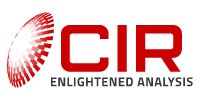Optical fiber in cellular infrastructure was first deployed in the 80s — much the same time that fiber was also creeping into wireline networks for the first time. Then as now, the primary driver for fiber deployment was bandwidth demand, which will soon take a great leap forward as 5G cellular replaces the 4G generations of cellular technology. What is being proposed with 5G is a cellular platform that can support 10 Gbps to mobile devices (needed for 4K and 8K video) and a two-order of magnitude increase in the number of devices connected to the cellular network (needed for the Internet-of-Things).
Linked to this expansive 5G vision (especially the video applications) are demanding latency requirements – not exceeding 1 ms. To top it all, 5G networks are expected to be considerably more energy efficient than the cellular generations that came before.
The Market for 25G in the 5G Fronthaul
Fronthaul is generally the link between the core controller and the radio head or small cell. It also needs optical networking to fulfill its functional mission. Here the fiber connects up the remote radio heads (RRUs) and the baseband units (BBUs). The growing interest in the fronthaul is also due in part to the use of the relatively new C-RAN architectures for 5G infrastructure, which has heavy and costly bandwidth requirements, that are creating significant new opportunities for fiber optic deployments. These opportunities are not just at 10G and 100G, but also at the relatively new 25G data rate. The fronthaul network, of course, represent significant costs for the 5G service providers, but these transceiver/optical networking costs can be justified since C-RANs can reduce cell site civil engineering costs, power consumption and maintenance.
- CIR believes that the first inclination for a 5G service provider is to try out 10G transceivers for front haul because of their very low cost. Typically, the 10G module that is deployed in this market DWDM SFP, which can extend up to 40 km in its ER variant and up to 70 km in its ZR variant. When this isn’t enough data rate, 100G transceivers may offer a solution. However, what seems to be emerging as an optimal fronthaul solution is a 25G infrastructure.
- There are several reasons why 25G optics is on the rise in 5G. One is that for some fronthaul applications 100G is overkill, while 10G doesn’t offer enough bandwidth. The advantages of 25G in mobile infrastructure notably that 25G is low cost because it uses an SFP format (SFP28) unlike the inherently more costly QSFP28 transceivers used for 100G.
- The 25G transceivers that we are talking about in the previous paragraph consist of of the garden variety of SR, ER and LR transceivers. But CIR thinks there is another potential – and more interesting use of 25G technology for 5G. About a year ago, the 3rd Generation Partnership Project (3GPP) released the first version of the specification on the Ethernet Common Public Radio Interface (eCPRI) used for 5G fronthaul, which will be used for 5G fronthaul interface and based on the current literature eCPRI may well be implemented over 25G WDM-PON, but a standard 25G transceiver can also handle eCPRI. This networking type is likely to be used in this application because it provides important benefits including low latency, fiber savings, plug-and-play Optical Network Units (ONUs), and simplified Operation and Maintenance (O&M).
Despite all the ballyhoo, CIR continues to believe that 5G is a somewhat risky prospect, so it makes sense to keep infrastructure costs very low. Third-party transceiver suppliers can help make that so. No one really knows if all the additional services that 5G promises are services that the customer really wants. We can, for example, already get HD movies on our 4G phones, so can a huge upgrade of cell phone infrastructure be cost justified so that we can get ultra-HD movies?
With 5G at such an early stage of deployment, no one really knows for sure what the infrastructure “should” look like in any given geography. This is another reason to keep costs low; some transceivers may actually end up being thrown away. In this market environment, 25G is a good compromise between cost and data rate.

